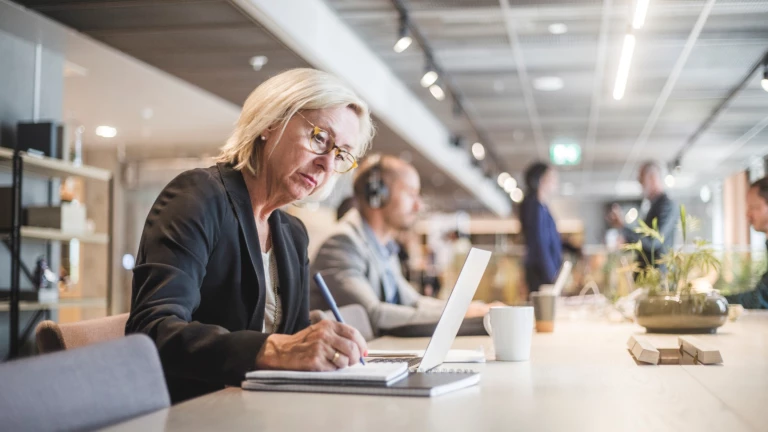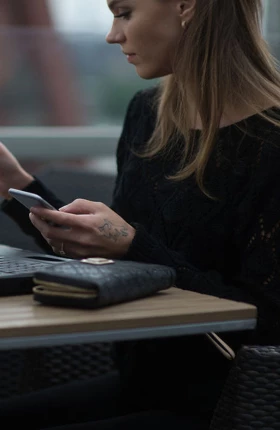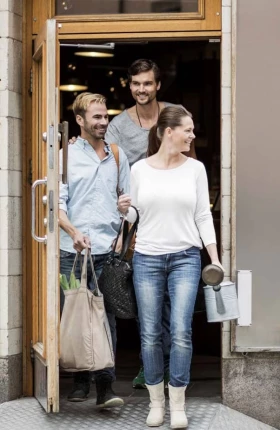The COVID-19 pandemic has thrown multiple challenges - and opportunities - in the path of Australian businesses. Changing consumer sentiment and spending habits have created a ‘boom or bust’ reality for many businesses and left others in a holding pattern from which they are only now starting to emerge.
Consumer sentiment, however, is only one piece of the complicated patchwork of changes inflicted on Australia’s business landscape; companies are also experiencing drastic change from within.
In BCG’s recent report, Personalisation for Your People, launched in June this year, we explored the shift in how we work, and looked at Australian employee sentiment. In this, our latest Employer Sentiment Survey, we asked employers about their predications, plans and aspirations for the coming months. In doing so, we have uncovered a disparity between what employees want and what employers think they want.
Three waves of change in employee–employer sentiment reflect the seismic changes that have hit Australian businesses in 2020. In the first wave - between about March and May – many employees were impacted dramatically but many others were excited; COVID-19 had forced a new, more flexible working reality. It was a novelty that saw a jump in productivity and engagement. Employers, meanwhile, were focused on how to ensure the safety of their staff, and how to quickly and effectively move them from the office to the home.
In the second wave - from around June to August - employees and employers were focused on how to maintain that productivity boost. This wave saw the widespread adoption of digital tools like Slack and Trello, and employers and employees came to the realisation that the new working reality was likely to last longer than anyone thought. Leaders and workers were forced to consider the possibility that new working arrangements were semi-permanent - or even here to stay. And the novelty of the new digital tools began to wear thin; ‘Zoom fatigue’ became a trend.
We are now in the midst of the third wave of the employee–employer shift in sentiment. It’s only just begun, but it’s already clear that employers are behind the eight ball. Amongst senior leaders, there is a concern about ‘cultural decay’ in their organisations and about a decline in employee engagement. Employees, on the other hand, face increasing mental health challenges; they are working longer hours and missing social interaction with their colleagues.
Employers have a real opportunity to get this new reality right for their businesses and for their people. It’s a challenge they must meet in order to stay relevant, to meet their obligations and responsibilities as an employer to look after their people, and to create a source of competitive advantage in the race to attract and retain the best talent.
Our new Employer Sentiment Survey was conducted through September and October, covering a cross-section of over 120 Australian companies, both large and small and across different industries. This has been supplemented by deep-dive conversations with senior Executives from over 40 of Australia’s largest organisations. It revealed seven core findings around how organisations plan to address structural changes to how we work.
Finding 1: Whilst almost two thirds of employees want a hybrid working model, employers believe this will happen for only 40%
The traditional working model for many organisations has been ‘office by default, remote by exception’. But the COVID-19 pandemic has exposed Australian workers to new ways of working. In our previous research, for those employees that can work remotely, 63% highlighted their ideal working model would be a hybrid of remote and office-based work (between one and four days a week).
By contrast, we found that employers believe that only 40% of their workforce (that can work remotely) will work in hybrid models in the long-term future. This means there is a clear expectation gap between employee desires and the working models envisaged by their employers.
In fact, there’s evidence of increased division among Australian workplaces between those that are embracing new, more flexible working models and those that are keen to ‘get back to how things were’. Employers think, on average, a third of their employees (that can work remotely) will be back in the office five days a week. But only 15% of employees say they want this. Interestingly, employers also believe that 27% of their people will work in fully remote models, although only 21% of employees actually want to work in this way.
Many companies have already implemented new policies. Twitter was the first major company to announce a permanent work-from-home policy for employees. Other big companies have followed suit to some degree: Square now has a permanent work from home policy, while Optus says its call centre staff will work from home permanently. Atlassian has said their teams can ‘work from anywhere’ although the company is still going ahead with the construction of a new office-based hub above Central Station in Sydney, confident that teams will use it.
Finding 2: Only one-third of companies are focusing on employee interaction, despite rising mental health concerns
In our June employee report Personalisation for your people, we demonstrated that a lack of social interaction with colleagues, clients and customers was a huge contributor to negative employee experiences. It was also the thing that employees told us they missed most about working at the office.
However, our most recent Employer Sentiment Survey indicates that only one-third of companies have undertaken, or plan to undertake initiatives to increase informal/social interactions and affiliation. This statistic is contributing to what some business leaders are calling ‘culture decay’, which results from the increase in remote working and associated decrease in social interaction and affiliation.
Australian businesses have tackled some of the most pressing challenges around digital tooling and the shift to remote working. They must now look at improving social interaction and affiliation for their people.
Many companies have a long journey ahead, but some have already started to tackle this issue: random coffees via Slack plug-ins, “Always on” Zoom rooms where anyone can pop into, “pet parades”, weekly dance parties and virtual exercise sessions have all started to become commonplace.
In terms of what worries employees most, decreasing income and job security are weighing heavily on their minds. But, as we explore below, planned rates of headcount reduction are lower than many employees fear—and many businesses are, in fact, planning to increase staff. Employers therefore need to find ways to reassure their staff during this time of uncertainty.
The chart below shows the disparity between what matters to employees and what employers are focused on. Many employers remain stuck in the second wave, focused on practical things like working at home spaces and formal contact between employees. While these are important, they are not as important to employees as more informal, social interactions which are desperately needed in the third wave.
Mental health challenges are a major factor impacting current employee experiences. Studies suggest about 15-20% of employees have always struggled with mental health challenges and far more face “mental performance” issues, where productivity is impacted by those feeling “a bit off”. The shift to remote working means people are working longer hours out of fear of losing their jobs. They are also struggling to find motivation and are unable to draw the line between their work and personal life. All of this takes a toll on employees’ mental performance.
More than 55% of companies acknowledge declining rates of mental health and are undertaking initiatives to increase access to mental health support. For example, Twitter provides counselling sessions for all employees, and many businesses provide Employee Assistance Programs (EAPs). Other organisations are also turning to digital tools such as the mental health support platform Ginger or mindfulness app Headspace.
Finding #3: Employers rate ‘collaboration’ as the most important skill post-COVID-19, but few have programs in place to boost collaboration among team members
Australia’s new working reality brings fresh challenges to team effectiveness; without physical interaction between colleagues, companies need to focus on making teams stronger in both remote and physical settings. Our survey shows that employers believe softer attributes, such as collaboration and empathy, will become more important post-COVID-19 than harder skills, such as problem-solving. Employers have identified collaboration and a focus on outcomes as the two most important attributes linked to team effectiveness. Empathy and an openness to coaching and feedback also rank highly.
Yet few businesses have tangible programs in place that truly focus on supporting teams, and importantly leadership, to build these skills to be effective in these new times.
The most successful businesses are putting a focus on teams at the top of their agendas. Atlassian, for example, is piloting a system that encourages employees to be transparent with each other and their leaders about their individual needs and set norms for how they want to work as a team. Transport for NSW is running a 900-person pilot to trial new ways of working, while Volt has permanently implemented a ‘Flex Fridays’ policy, giving employees Friday off as long as they work to ‘maintain the productivity levels of a typical five-day work week’.
Finding #4: 31% of companies are planning further headcount reductions
More than 50% of surveyed companies have reduced their workforce as a result of the COVID-19 pandemic, some by as much as half.
The coming 18 months will see further workforce reductions, although not at such a rate. And there is some good news: while 30% of companies anticipate they are likely to reduce headcount, 20% of companies are anticipating an increase to their workforce—some by more than 20%. 50% of surveyed companies plan to maintain their current headcount.
10% of Australian companies see cost pressures as one of the biggest drivers forcing them to rethink how they work, while other drivers include the move to greater automation and shifts in employee productivity.
When compared to global trends, the story is similar, albeit slightly more pessimistic. Globally, from a similar BCG survey conducted in June, 44% of companies anticipate further headcount reductions, compared with 31% in Australia. Only 6% are looking to increase employees compared to around 20% here.
Finding #5: More than a quarter of companies won’t bring the bulk of their workforce back until there is a vaccine, however, only half consider ‘employee willingness’ in their top three criteria for deciding who comes back first
Nearly 42% of companies plan to have a large bulk of their workforce (>30%) back in the workplace by Christmas 2020, with a further 30% shortly after Christmas. However, about 20% of companies will only bring back a significant portion when there is sufficient containment and/or a COVID-19 vaccine, while 6% are not planning to return a significant portion of their workforce at all. These return-to-work plans raise interesting challenges; employers now need to decide which employees to bring back first.
Our survey found that more than half of employers see ‘on-site criticality’ as the most important criteria in bringing back employees, meaning that for many workers that can work remotely, they will likely continue to do so.
However, only 53% of companies considered “Employee willingness” in their top three most important criteria. This presents an interesting dynamic as employers divide into those pushing to get their people ‘back to the office’ and those that have embraced remote working, caring more for employee engagement and content with the productivity they have seen during the last 9 months.
Finding #6: Nearly half of Australian companies surveyed expect to reduce real estate space in the long term, but there are questions as to whether savings can be realised
More frequent remote working and online engagement with customers and clients is driving companies to go digital, reducing the need for physical premises. Ongoing (and sometimes increasing) pressure to reduce costs is also forcing some companies to shed headcount, further reducing the need for office space. For these reasons, nearly half (44%) of companies anticipate reducing their real estate footprint within the next 18 months – and half of these by more than 20%.
But by comparison, BCG’s own global employer research from June showed nearly three quarters of global firms expect a reduction. Companies are clearly rethinking how they approach real estate, floorplans and the traditional role of the office. British bank Barclays will explore moving to a more decentralised working model that might include local bank branches serving as satellite offices, while Fujitsu will halve its office space in Japan and offer greater flexibility to its 80,000 employees.
But how real are these reductions, and will organisations be able to realise the anticipated savings? Clearly there remains a role for the office. As we discussed earlier, in Australia, 85% of employees want to spend at least one day a week in the office. But as the role of the office evolves, more space per head may be needed due to new formats and layouts beyond a typical hot-desk; travel costs for affiliation events may rise, satellite offices still need to be funded and commercial leases are long and expensive to break.
Finding #7: The office remains important to employees, but employers misunderstand why
While some employees have enjoyed the novelty of permanent remote working, many are eager to return to the workplace in some capacity, citing affiliation and social connectedness with colleagues, to have ‘accidental collisions’ in the kitchen or the corridor, and to get work done in a collaborative fashion.
But employers, as shown in the exhibit below, still think of offices in terms of their traditional function—a place to work, to hold meetings and attend training. Employers see the working environment and setup as the primary benefit of the physical office.
Employers would be wise to pay attention to how employees view the office. As the world moves to a more hybrid working model, there is an opportunity for employers to repurpose office space, and how it functions, to reflect new needs and to create opportunities for interaction and collaboration. New office designs are incorporating spaces that increase accidental collisions to aid social interaction, with more team rooms for collaboration, and, potentially counter to trends over the last decade, more offices with doors to allow for focused work.
The changes to Australia’s work landscape throughout 2020 have been stark and unpredictable. But the disparity between what employees want and what employers think they want threatens to disrupt productivity, company culture and profitability.
Clearly employers shouldn’t bow to every whim of every employee, but by re-thinking approaches to working models, improvement initiatives and the role of the office, it should be possible to balance business needs and employee expectations.
To meet this challenge and address the expectation gap, there are several recommendations for employers to consider:
WORKING MODELS AND EMPLOYEE DISPARITY
- Find a way to make hybrid models work for your organisation, recognising that this comes with many challenges. The division of organisations into those going ‘back to the old ways’ of five days a week in the office, versus those embracing new ways of working will have profound impacts on a company’s success at attracting and retaining talent. Imagine an organisation that orders all staff to return to the office five days a week - when their staff members look at the ongoing flexibility enjoyed by their peers in other companies, how do you think they will feel? Many job-seekers today are only considering roles with flexible/remote options; organisations that fail to provide these will dramatically reduce their access to talent pools. Recently, Karin Kimbrough (Chief Economist at LinkedIn) said “the volume of job searches using the ‘Remote’ filter on LinkedIn has increased ~60% since the beginning of March, and the share of Remote Job Applications has increased nearly 2.5 times globally from March”. Onshore, at the start of the pandemic, SEEK released a new feature allowing employers to indicate whether a role could be performed remotely/from home.
- Careful and tailored internal messaging will be key. Employers need to ensure there is no division between the ‘haves’ and the ‘have nots’ in terms of flexible working models. Most organisations have many workers who need to be onsite for their roles, be they maintaining servers, stacking shelves or driving trucks. Companies must think through both what they can offer each employee group independently (e.g., can shift workers have more flex around hours worked), and also how working models are communicated differently to different groups within their organisation.
IMPROVEMENT INITIATIVES
- Employers must manage for mental health AND mental performance. There is little excuse for companies not to invest in programs that support mental wellbeing: Australia’s National Mental Health Commission, in conjunction with the Mentally Healthy Workplace Alliance, has created a series of evidence-based, easy-to-use guides to support the mental health and wellbeing of Australian workers and to encourage mentally healthy workplaces during COVID-19. But in the rush to assist those with more acute symptoms, we should not forget a much larger population, who often go unidentified: those who may just be feeling ‘a bit off’. Due to their size, this group can have a tangible impact on overall productivity and may be at higher risk of transitioning into cases with more serious issues.
- Businesses should double-down on activating teams. Getting the individuals within a team to agree their own way of working is the unlock that will enable the right trade-offs to be made at a practical level between business outcomes and individual outcomes. At BCG we use our Predictability, Teaming and Open Communication (PTO) system, which encourages teams to focus on their progress and their sustainability needs. PTO has seen a 35% increase in teamwork and collaboration. The creation of corporate guardrails and team norms as well as regular conversations at a team level will be essential to ensuring that new models work.
- Leaders are the key to the new working reality. Leaders must lead by example and support flexible, hybrid working models, or these new arrangements will falter. This will be a challenge, and leaders at all levels will need support. As one senior business leader recently said: “I think our biggest challenge will be to upskill our leaders with the capability to negotiate fairly and authentically with their team.”
THE ROLE OF THE OFFICE
- Listen to your people and try not to force them back to the office: Listening is key – understanding the pulse of your organisation will help you to modify policies and communications that will benefit everyone. For example, an internal survey at one organisation revealed that 80% of staff were actually fine with coming into the office, yet only 20% wanted to get on crowded public transport. Staggering start/end times away from peak hours, allayed many fears and increased the speed of returning to the workplace.
- Businesses need to reimagine their office space. This must mirror what employees find valuable about being in the office, and design for accidental collisions to aid social interaction. While real estate footprints will undoubtedly decrease, it may not be as much as some people think. Physical office spaces will continue to play an important role in bringing people together, and as a place for some to be productive.
At BCG, we’ve already explored how savvy business leaders are adapting to our new reality. The business leaders who are getting it right are developing a range of flexible work models for employees, unlocking productivity by focusing on outcomes and outputs rather than presence and inputs, and creating smarter environments for their people to work and connect.
Many employers have made important strides in the right direction - strides that benefit their employees and address their primary concerns - or are in the process of doing so. But many are not, and most could do with some improvement. Leaders therefore have a real opportunity to take advantage of this third wave of workplace change for the benefit not only of their people, but also of their bottom line.
About the 2020 Employer Sentiment Survey
Acknowledgements
For Further Contact
If you would like to discuss this report, please contact mattey.chris@bcg.com.















